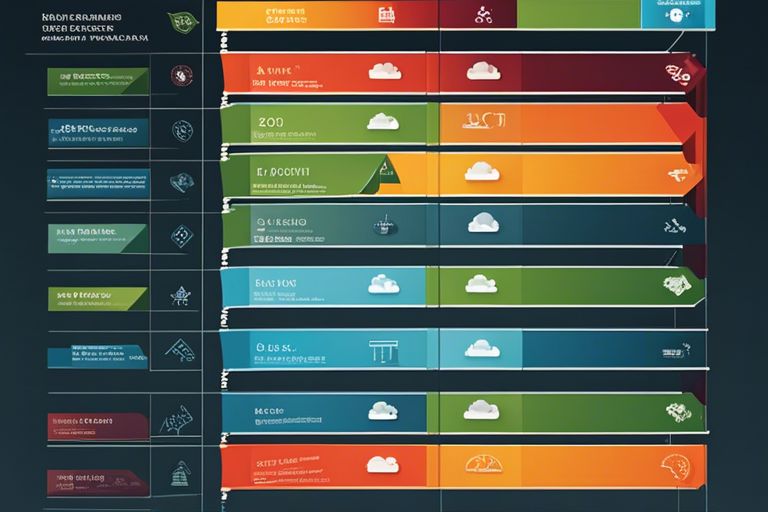You know that proper asset allocation is crucial for building a successful investment portfolio. Allocating your assets strategically across various asset classes can help you achieve your financial goals while managing risk effectively. In this blog post, we will discuss some imperative guidelines to help you make informed decisions when it comes to asset allocation. Understanding these guidelines will not only optimize returns but also protect your investments in the long run.
Key Takeaways:
- Understand Risk Tolerance: Before allocating assets, assess your risk tolerance to choose investments that align with your comfort level.
- Diversification is Key: Spread your investments across different asset classes to reduce risk and optimize returns.
- Periodic Review and Rebalancing: Regularly review your portfolio’s performance and rebalance assets to maintain your desired allocation mix.
Understanding Asset Allocation
Your investment portfolio’s performance is heavily influenced by asset allocation. It is crucial to understand this concept to make informed decisions about your investments.
Definition and Importance
On a basic level, asset allocation refers to the distribution of your investments across different asset classes like stocks, bonds, and cash equivalents. It plays a critical role in determining the overall risk and return of your portfolio. Proper asset allocation allows you to balance risk and return based on your financial goals, time horizon, and risk tolerance.
Types of Assets
For proper asset allocation, it is imperative to understand the different types of assets you can invest in. These include stocks, bonds, real estate, commodities, and cash equivalents. Each asset class has its characteristics in terms of risk and return potential.
- Stocks offer high potential returns but come with higher risk levels.
- Bonds provide regular income and lower risk compared to stocks.
- Real estate can offer diversification and potentially stable returns.
- Commodities are volatile but can provide a hedge against inflation.
- Cash equivalents offer stability and liquidity but lower returns.
Assume that you want to create a diversified portfolio that balances risk and return by combining these asset classes.
| Asset Class | Characteristics |
| Stocks | High potential returns, high risk |
| Bonds | Regular income, lower risk |
| Real Estate | Diversification, stable returns |
| Commodities | Volatility, inflation hedge |
| Cash Equivalents | Stability, liquidity, lower returns |
Plus
Understanding asset allocation is crucial for long-term investment success. By diversifying your portfolio across different asset classes, you can reduce the overall risk and increase the potential for returns. It is important to periodically review and adjust your asset allocation based on changes in your financial situation and market conditions.
Assessing Your Financial Goals
Short-Term vs. Long-Term Objectives
While setting financial goals, it is crucial to differentiate between short-term and long-term objectives. Short-term goals usually include expenses that need to be covered within the next one to five years, such as purchasing a new car or going on a vacation. On the other hand, long-term goals involve plans that are years away, like saving for retirement or funding a child’s education. Understanding which goals are immediate and which are in the distant future will influence your asset allocation strategy.
Risk Tolerance and Time Horizon
Your risk tolerance and time horizon play a significant role in determining the right asset allocation for your investment portfolio. Risk tolerance refers to how comfortable you are with potential volatility and losses in your investments. Time horizon, on the other hand, is the length of time you expect to hold onto your investments before needing to access the funds. These two factors are crucial in deciding the mix of assets that will help you achieve your financial goals while managing risk.
This assessment is critical because it impacts the level of risk you are willing to take on to achieve your financial goals. A high risk tolerance could lead to a more aggressive asset allocation with a higher proportion of stocks, potentially yielding higher returns over the long run. Conversely, a low risk tolerance might result in a more conservative approach with a greater emphasis on bonds or cash equivalents, prioritizing capital preservation over growth.
Strategies for Asset Allocation
Age-Based Allocation
Once again, asset allocation is crucial for a successful investment strategy. One of the key factors to consider when determining your asset allocation is your age. Different age groups may have different risk tolerances and investment goals, which should be reflected in how their assets are allocated.
Diversification Principles
Asset allocation based on age is just the beginning. Diversification principles should also guide your investment decisions. Diversifying your portfolio across different asset classes, such as stocks, bonds, and real estate, can help spread risk and potentially increase returns. It is important to not only diversify across asset classes but also within each class by investing in different industries and regions.
Another crucial aspect of diversification is rebalancing your portfolio regularly to maintain your desired asset allocation. This involves selling assets that have performed well and buying more of those that have underperformed to bring your portfolio back in line with your targets.

Rebalancing Your Portfolio
Monitoring Asset Performance
For proper asset allocation, it is crucial to regularly monitor the performance of your investments. Keep track of how each asset is performing relative to your overall portfolio goals. Make adjustments as needed to ensure that your portfolio stays aligned with your risk tolerance and investment objectives.
Adjusting Asset Mix Over Time
The market conditions and your personal financial goals can change over time, impacting the performance of your assets. It is necessary to periodically assess your portfolio’s asset allocation and make adjustments to maintain a proper balance. By periodically reviewing and adjusting your asset mix, you can ensure that your portfolio remains in line with your long-term investment strategy.
Rebalancing your portfolio not only helps in managing risk but also allows you to capitalize on potential opportunities for growth. Ignoring the need to rebalance your portfolio can lead to overexposure to certain assets, increasing the risk of loss during market downturns. On the flip side, regularly rebalancing helps to lock in profits from assets that have performed well and reallocating them to underperforming assets, ultimately working towards maintaining a balanced and diversified portfolio.
Allocation for Different Life Stages
Despite the varying needs and goals throughout life, asset allocation plays a crucial role in achieving financial stability. It is necessary to adapt your investment strategy based on your life stage, whether you are just starting your career, in the middle of your working years, or enjoying retirement. For beginners, it is recommended to refer to the Beginners’ Guide to Asset Allocation, Diversification, and … to get a grasp of the basics.
Asset Allocation in Youth
With time on your side in youth, you can afford to take more risks and aim for higher returns. Investing aggressively in a diversified portfolio of stocks and other growth assets can help maximize your long-term growth potential. It is crucial to focus on building a solid foundation for your future financial security during this stage of life.
Asset Allocation in Middle Age
On the other hand, during the middle years of your life, you may need to balance growth with stability. Asset allocation in middle age should focus on a diversified mix of stocks, bonds, and other assets to minimize risks while still aiming for reasonable returns. Regular reviews and adjustments to your portfolio are crucial to meet your financial goals.
Asset Allocation in Retirement
Middle-aged individuals approaching retirement need to shift their focus towards preserving capital and generating a reliable income stream. Reducing exposure to volatile assets and increasing investments in more stable options such as bonds and cash equivalents can help maintain financial security during retirement. Regular withdrawals should be carefully planned to ensure your savings last throughout your retirement years.
Conclusion
The Essential Guidelines For Proper Asset Allocation are crucial for investors looking to achieve their financial goals while managing risk. By understanding your investment objectives, risk tolerance, time horizon, and diversifying across different asset classes, you can create a well-balanced portfolio that can weather market fluctuations. Remember to review and adjust your asset allocation periodically to ensure it aligns with your changing goals and circumstances. Following these guidelines will help you build a strong foundation for a successful investment strategy.
FAQ
Q: What is asset allocation?
A: Asset allocation is the strategy of distributing your investments across different asset classes, such as stocks, bonds, and cash equivalents, to achieve a balance between risk and return.
Q: Why is proper asset allocation important?
A: Proper asset allocation is important because it helps investors manage risk by diversifying their portfolio. It ensures that you are not putting all your eggs in one basket and can help you achieve your financial goals over the long term.
Q: How do I determine the right asset allocation for me?
A: The right asset allocation for you depends on your investment goals, risk tolerance, time horizon, and financial situation. It is important to review and adjust your asset allocation periodically to ensure that it continues to align with your objectives.




